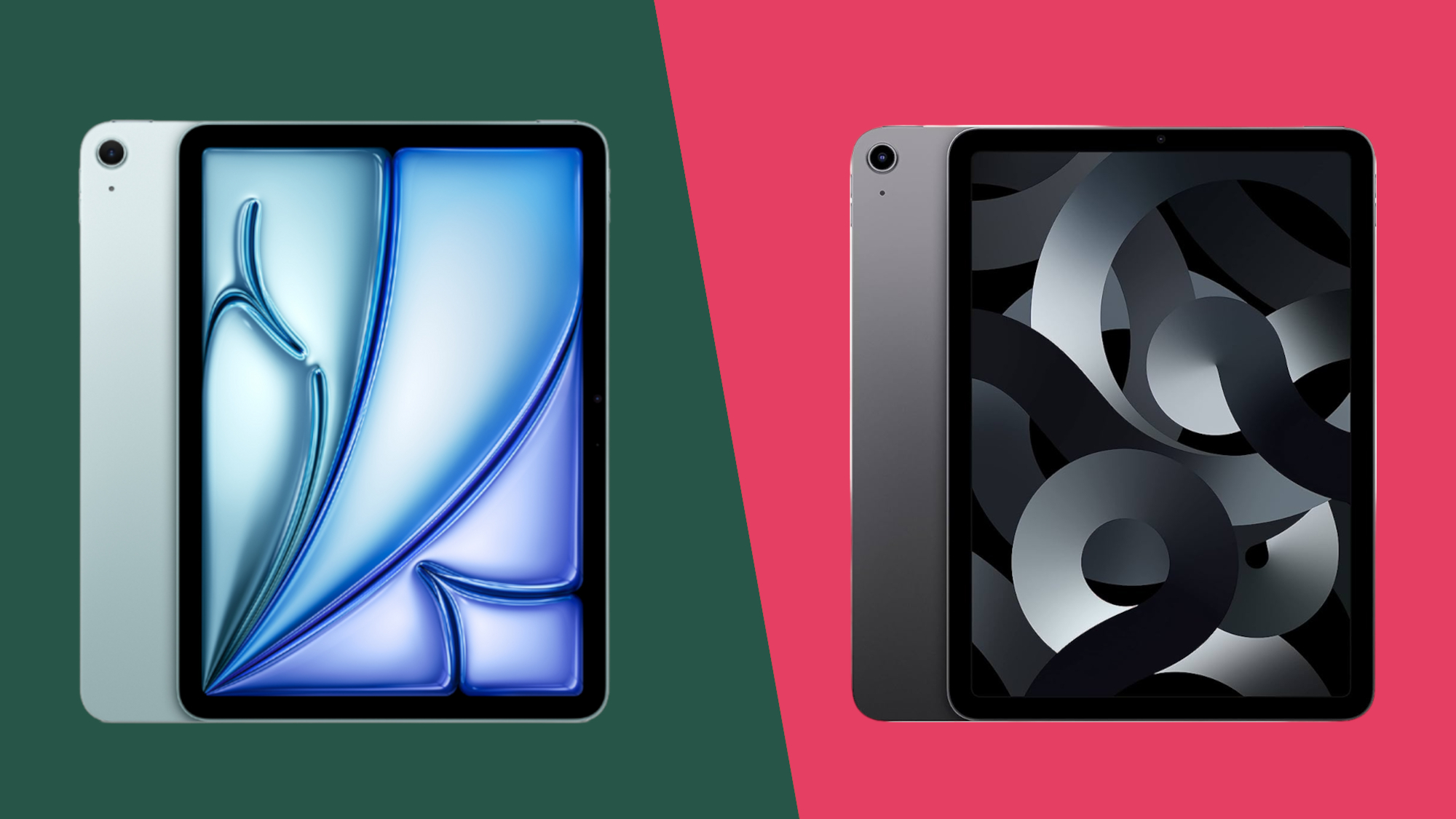
Alongside the monstrous iPad Pro (2024), Apple also launched the iPad Air (2024), and while this isn’t the biggest upgrade we’ve ever seen, it does have some significant improvements over the iPad Air (2022).
These include a powerful M2 chipset, a repositioned selfie camera, and – perhaps most notably – the option of a larger 13-inch screen size.
So is the iPad Air (2024) worth upgrading to? Well, both based on the specs and our impressions in our iPad Air 13-inch (2024) review, we’ve compared it to the iPad Air (2022), to give you a clearer idea.
iPad Air (2024) vs iPad Air (2022): specs comparison
Before we look closely at the various aspects of these new and old(er) slates, the chart below provides a brief rundown of their key specs, so you can see their similarities and differences at a glance.
iPad Air (2024) vs iPad Air (2022): price and availability
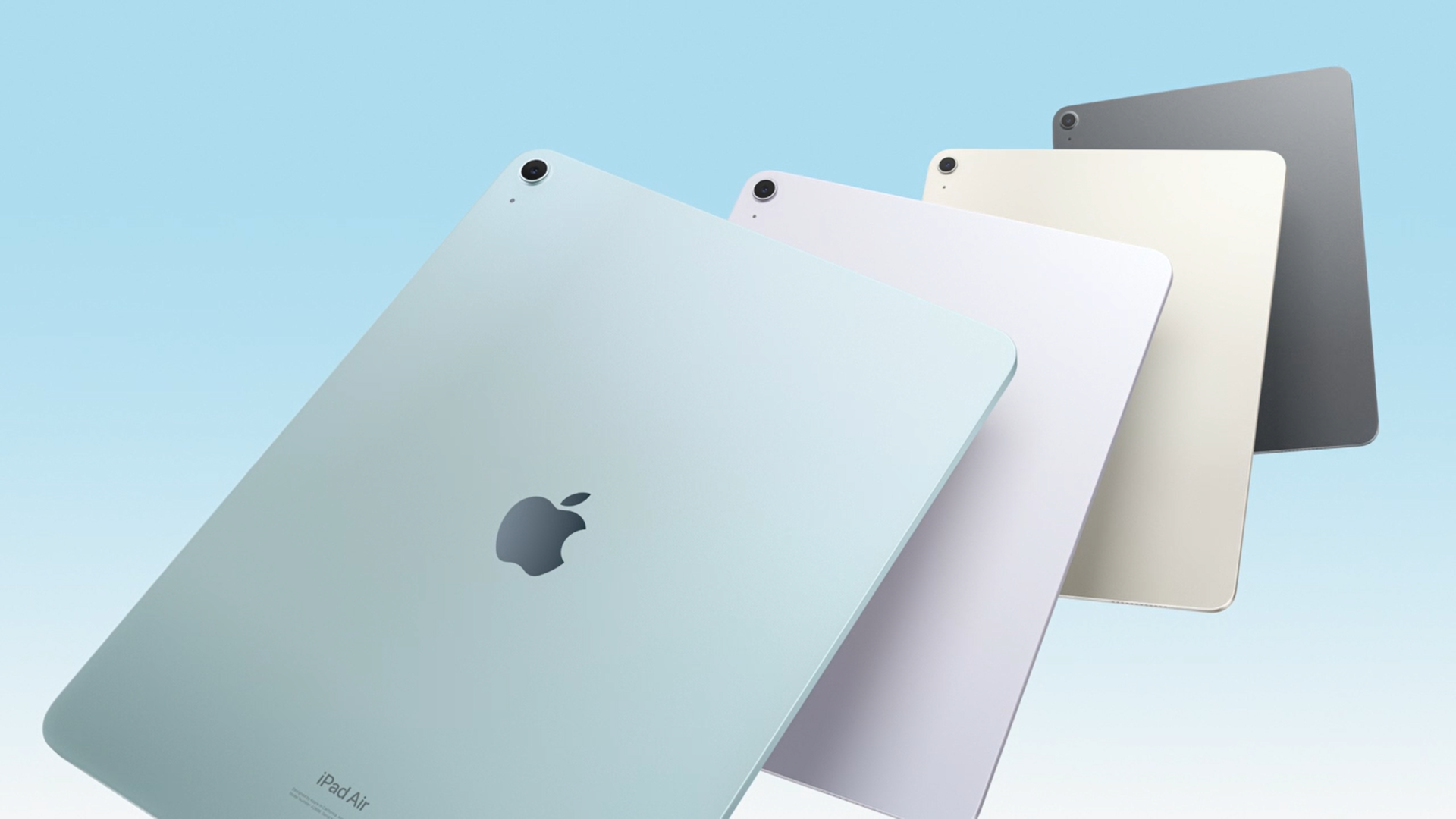
The iPad Air (2024) was announced on May 7, 2024, and went on sale May 15. The iPad Air (2022) launched back in 2022 obviously, and while it was widely available, it has now been discontinued – though some third-party stores will still have stock at the time of writing.
As for the price, the iPad Air 11-inch (2024) starts at $599 / £599 / AU$999, which gets you a 128GB Wi-Fi model. The 11-inch option tops out at $1,249 / £1,249 / AU$2,129, for a 1TB Wi-Fi and cellular model.
The iPad Air 13-inch (2024) starts at $799 / £799 / AU$1,299 (again for 128GB), and tops out at $1,449 / £1,449 / AU$2,429 (for a 1TB version with Wi-Fi and cellular connectivity).
The iPad Air (2022) only comes in one size (10.9 inches), and that starts at $599 / £569 / AU$929, which is for a 64GB Wi-Fi model. It tops out at $899 / £869 / $1,389, for a 256GB model with Wi-Fi and cellular.
So the starting price of the iPad Air (2024) is similar to that of the iPad Air (2022) – albeit marginally higher in the UK and Australia. And that’s for twice as much storage.
Of course, the larger 13-inch iPad Air (2024) costs more, and both sizes top out at a higher price than the 2022 model, but that’s with way more storage than you can get the iPad Air (2022) with.
iPad Air (2024) vs iPad Air (2022): design and display
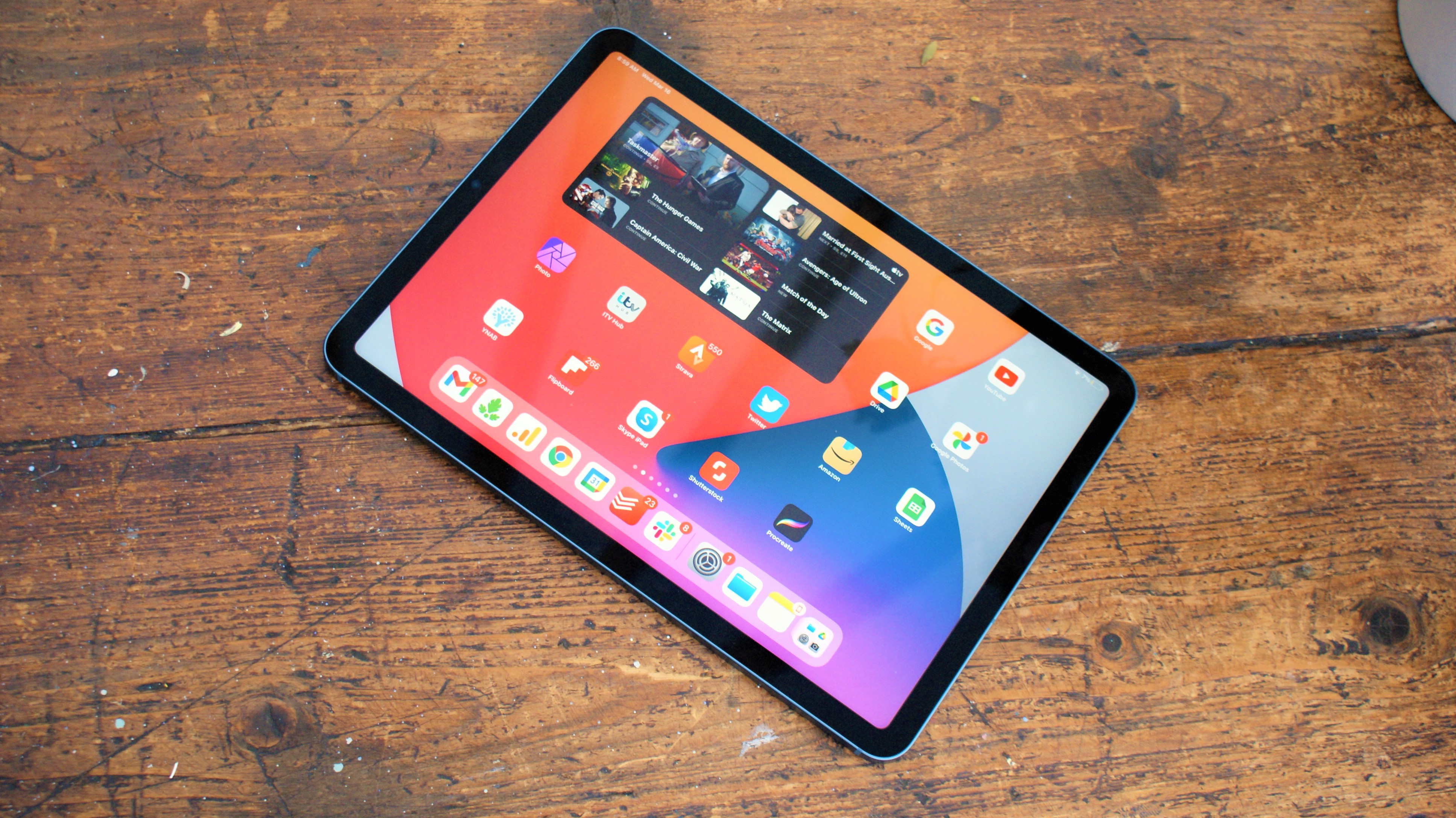
The design of the iPad Air (2024) isn’t dramatically different to that of the iPad Air (2022). In fact, the iPad Air 11-inch (2024) has exactly the same dimensions as the iPad Air (2022), at 247.6 x 178.5 x 6.1mm, and it weighs almost the same too, with the 2024 model being 462g while the 2022 one is 461g.
The larger iPad Air 13-inch (2024) is of course bigger and heavier, but just as slim, at 280.6 x 214.9 x 6.1mm and 617g.
All of these tablets are clad in aluminum, and there are only really two other differences. One is the position of the front-facing camera, which is on a long edge with the 2024 models and the short top edge with the 2022 model.
The other is the available colors, with the iPad Air (2024) being sold in Space Gray, Starlight, Purple, and Blue, while the iPad Air (2022) is available in Space Gray, Starlight, Pink, Purple, and Blue. So even there, the only real difference is that the older tablet is available in Pink, while the rest of the shades are almost identical, albeit a slightly different tone.

There aren’t too many differences when it comes to their screens either, with all of these tablets having around 264 pixels per inch, and using IPS LCD. The iPad Air 11-inch (2024) and the iPad Air (2022) also have the same resolution and brightness, at 1640 x 2360 and 500 nits respectively.
The big difference though is the presence of a larger 13-inch model this year. The iPad Air 13-inch (2024) then is higher resolution at 2048 x 2732 (though with the same pixel density), and its screen can get brighter, reaching 600 nits.
We were fairly impressed with this screen in our review, describing it as delivering “vibrant colors and the ability to craft immersive visuals.” Though sadly none of these tablets have a 120Hz refresh rate – they're all stuck at 60Hz.
iPad Air (2024) vs iPad Air (2022): cameras
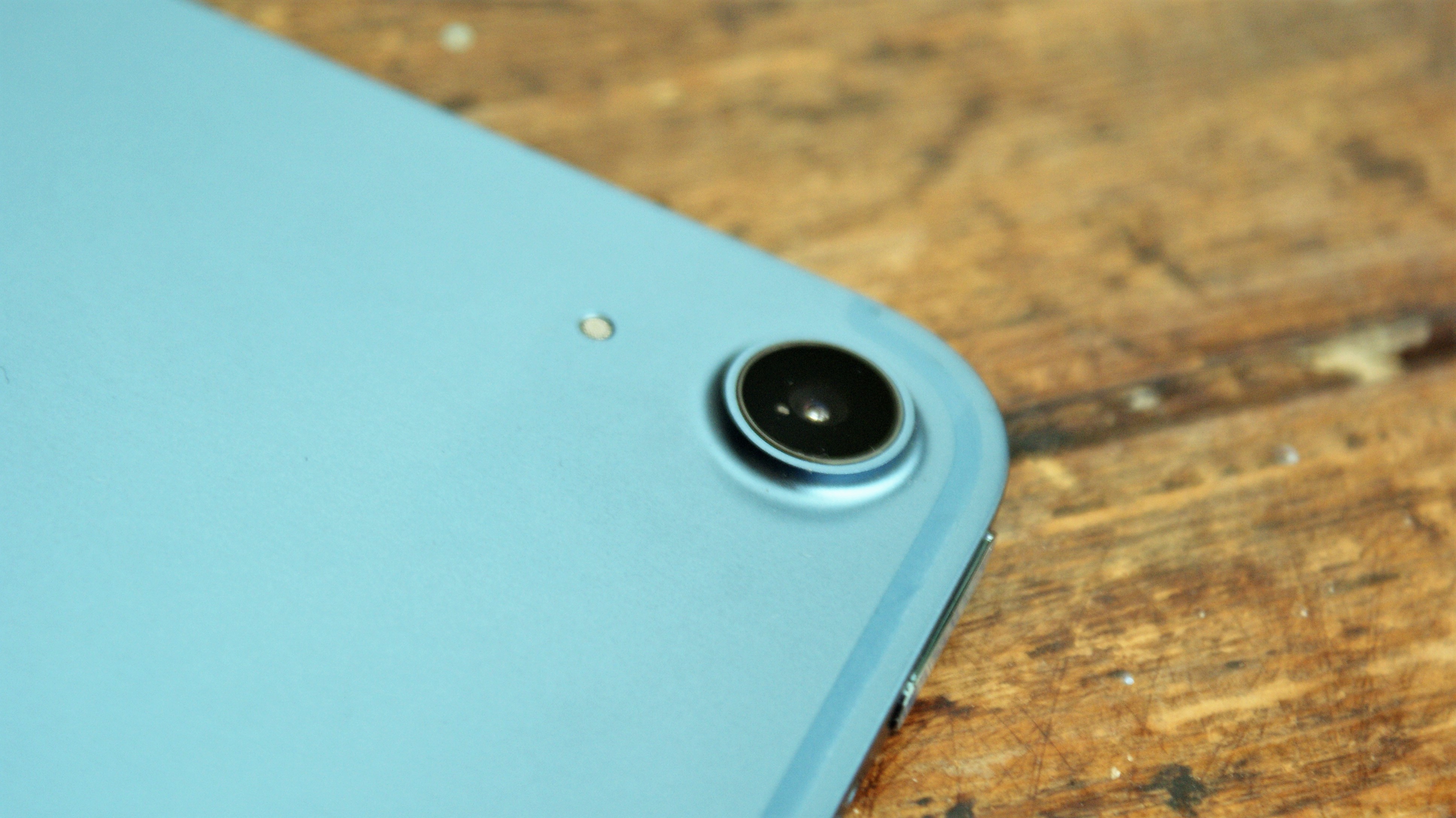
If you were hoping for camera upgrades on the iPad Air (2024) then – at least in terms of the rear camera – you’re out of luck, as it has the same 12MP f/1.8 camera as the iPad Air (2022).
Things have changed slightly on the front though, as while both generations of iPad have a 12MP f/2.4 ultra-wide camera (with a 122-degree field of view), it’s on the top edge of the iPad Air (2022), but it’s on one of the longer edges of the iPad Air (2024).
That makes it more ideally suited for landscape use on the new iPad, which should be preferable for most people, since it’s a better position for video calls.
iPad Air (2024) vs iPad Air (2022): performance and software

One of the biggest upgrades this generation is to the chipset, with the iPad Air (2024) having an M2 chip, in place of the M1 used by the iPad Air (2022). Apple claims this newer chipset is almost 50% faster than the M1, so it’s a substantial upgrade – though notably trails behind the M4 chipset in the iPad Pro (2024).
That said, the iPad Air (2022) is still a powerful tablet, so if your use cases aren’t super-demanding then you might not benefit much from the extra power in the new generation, especially as both generations have 8GB of RAM.
Where the iPad Air (2024) should be an improvement for everyone though is the available storage. It starts at 128GB, which is double the frankly unacceptably low 64GB that the iPad Air (2022) starts with. And it tops out at 1TB, rather than 256GB. So storage is a lot less limited with the iPad Air (2024).
For software, both generations run iPadOS 17.4, but the iPad Air (2022) has been through two years of updates to get there, so Apple may well stop supporting it two years before it stops supporting the iPad Air (2024).
iPad Air (2024) vs iPad Air (2022): battery
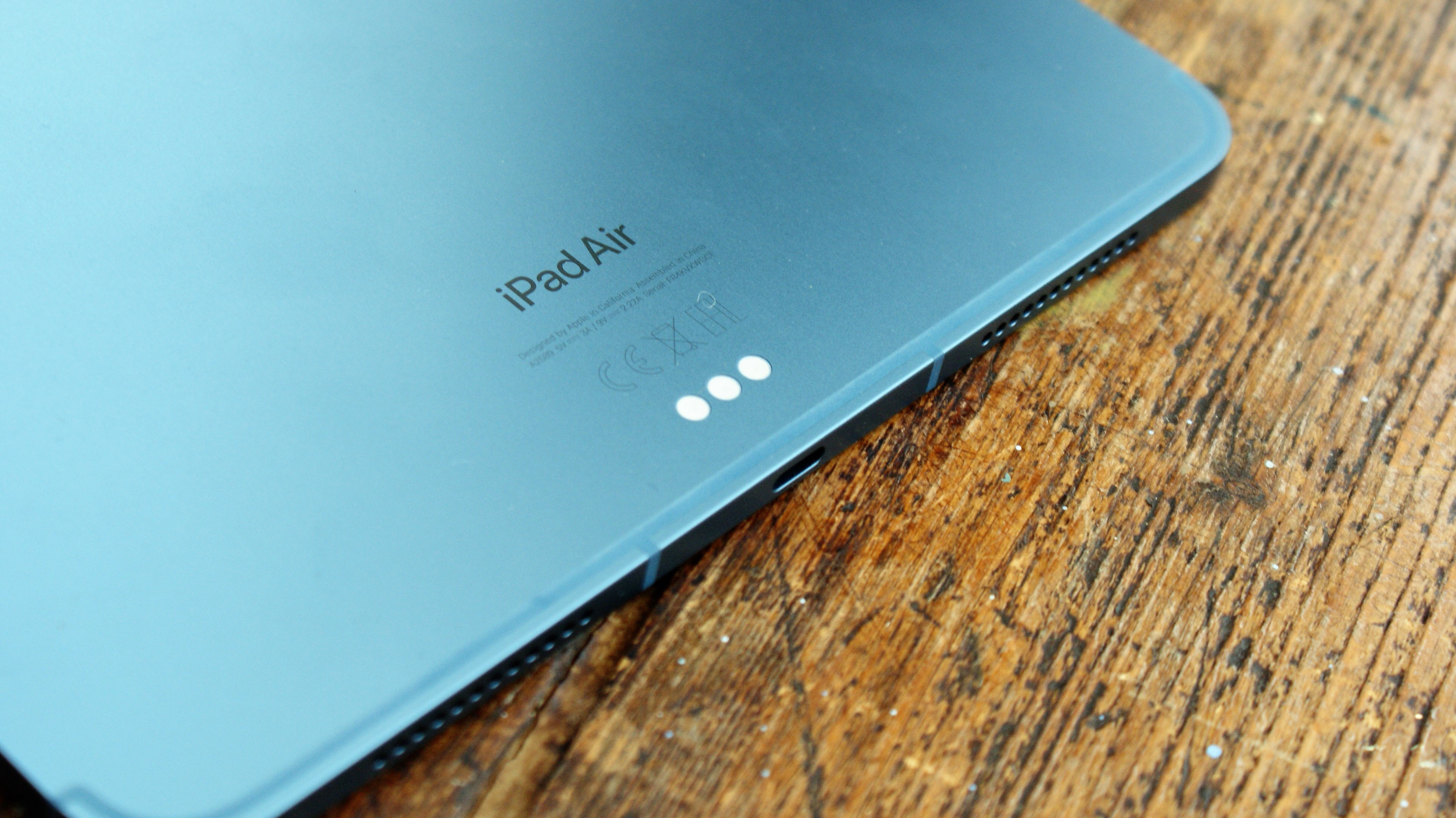
Apple claims that all of these tablets offer up to 10 hours of life when surfing the web on Wi‑Fi or when watching videos, and that they can all manage up to 9 hours of life when web browsing using a mobile data network.
So there shouldn’t be any significant differences in their battery lives, and they all charge via USB-C as well.
We found that the 2022 model largely lived up to Apple’s claims, although when using it heavily or with patchy 5G coverage the battery dipped slightly faster than Apple suggests it should.
iPad Air (2024) vs iPad Air (2022): verdict
The main differences between the iPad Air (2024) and the iPad Air (2022) – on paper – are a faster chipset in the new model, along with a better position for the front-facing camera, the option of a bigger screen, and more storage, both in terms of the starting capacity and the maximum available.
The iPad Air (2024) will probably be supported with software updates for longer too, but should have a similar battery life, screen quality, and camera performance, and has a near identical design, as well as having the same amount of RAM.
So this isn’t the biggest or most exciting upgrade, but when you consider that its starting price is roughly the same and that you get twice as much storage for that money, it’s clearly the better prospect in 2024 – unless you can find a heavily reduced iPad Air (2022).
We’d hesitate to say you should upgrade from the older model to the iPad Air (2024) though, going by the specs list – but for a better idea of how it performs in practice, make sure to read our full iPad Air (2024) review.
You might also like
- Hands-on iPad Pro 13-inch (2024) review: the impossibly thin king of iPads
- Hands on: iPad Air 13-inch (2024) review: you no longer need to go Pro
- iPad Pro (2024) vs iPad Pro (2022): the key differences







